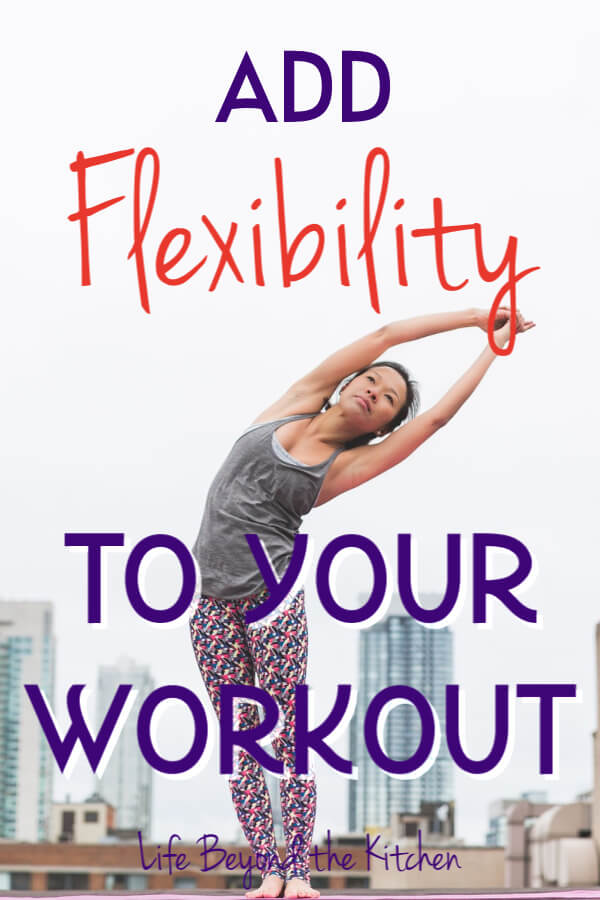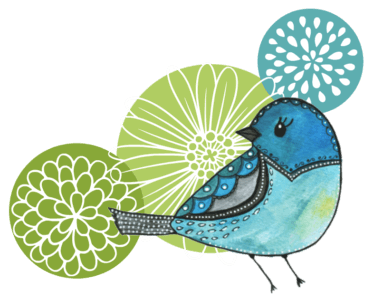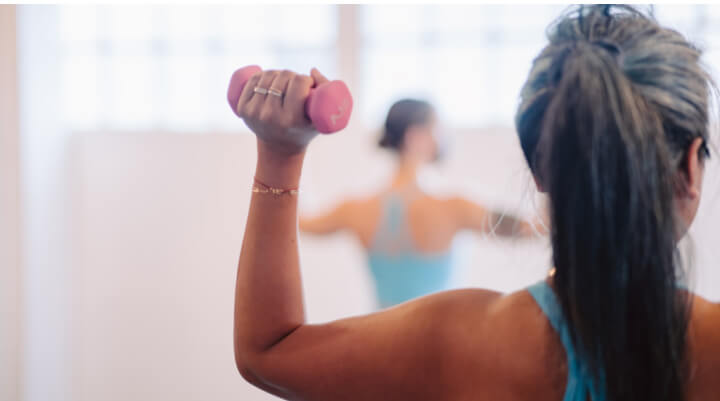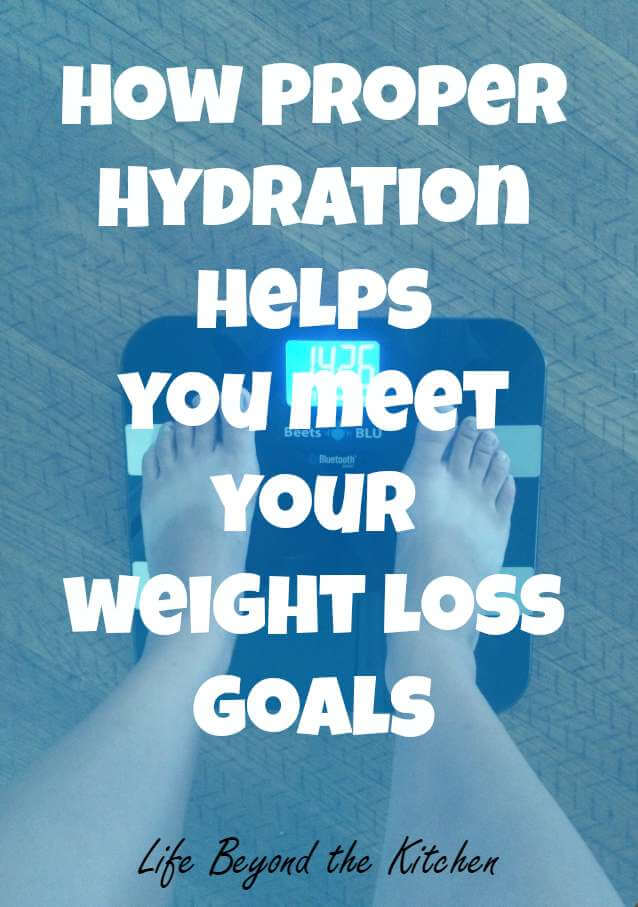Add Flexibility to Your Workout
Last Updated on March 11, 2019 by lydiaf1963
This post was originally published on Lydia’s Flexitarian Kitchen. This seems like a good time to update and revisit it.
We work our hearts with cardio, we work our muscles with strength training and we fuel our bodies by eating properly. Adding flexibility exercises to our workout routine is not only a restorative change, it will also help with overall mobility and range of motion.
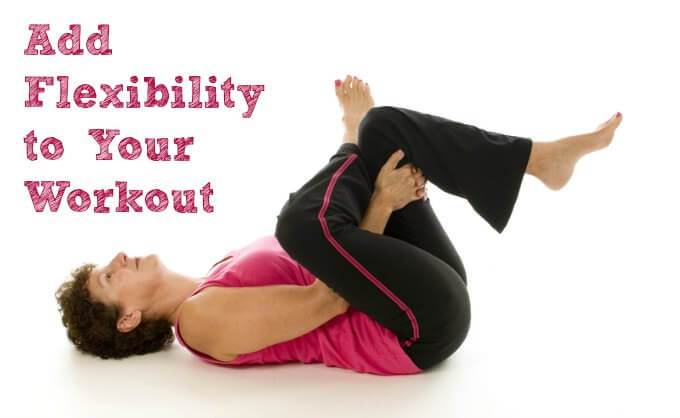
Photo credit: © Robert Lerich | Dreamstime.com
Stretching should feel good. If it hurts, reconsider the stretch you’re attempting. There are some conditions (sciatica for example) that can be made worse by improper stretching. Make sure to check with your doctor or other health care professional if you have any concerns about adding a flexibility routine to your fitness regimen. Most of us will get along fine following a DVD or downloaded routine.
I’ve noticed that there’s a lot of truth to the phrase “use it or lose it.” If I don’t stretch on a regular basis my joints, especially my hips and shoulders, even my ankles (!) start to give me trouble. You might know how it is, the first few steps of the day are sort of a shuffle until the blood gets flowing. To make things even more complicated, a loss of flexibility in one area can lead to problems in the next joint as your body tries to compensate. For example, I try not to slump when sitting at the computer, but when I don’t pay attention my shoulders round and my head moves forward. My rib cage collapses and it becomes more difficult to sit up straight. Next thing I know I’m rounding my shoulders and collapsing my chest when standing upright or walking. Exercises which stretch the torso, particularly across the chest and sides of my body, make it easier to maintain better posture and eliminate a great deal of the discomfort in my neck and low back.
We tend to think of yoga when talking about flexibility. One of the benefits of yoga is many of the poses allow you to stretch and strengthen at the same time. The standing poses also help improve your balance. Learning yoga is almost like learning a new language, although you get familiar with the terminology quickly enough. There are lots of videos on YouTube (like Yoga with Adrienne’s Yoga for Beginners Playlist). If you’re on Amazon Prime, Rodney Yee has a series devoted to beginning yoga. He also teaches how to use props like yoga blocks and straps to help coax the body into the proper position. Searches for gentle yoga, yoga for beginners, yoga for inflexible people or yoga for seniors are sure to yield an instructor which resonates with you and the needs of your body.
If you’re not into yoga there are other fitness systems that may suit you better. Tai Chi, for example, combines movement and breath to take your body through a range of motion. It not only builds flexibility, it will help improve stamina and balance as well. The combination of movement and breath is also meditative. Check out Taiflow on YouTube to see if you might like it. Don’t let the simple movements fool you! This is a form of dynamic stretching where the regular motion assists in lengthening the muscle. If you’re particularly inflexible you may find it challenging, but it feels really good. Some other videos which feature dynamic stretching include this one from Mirabai Holland and this gem from Richard Simmons: Stretching to the Classics. These two are dated, obviously, but the exercises demonstrated will give you a head to toe workout.
The National Institute of Health suggests these exercises to help improve flexibility and range of motion from head to toe. Those of us who do a lot of sitting will appreciate the opportunity to take a break and do some of these exercises during the day. A few of them can even be performed in a chair. The simple stretches linked to above will provide relief from stiffness or improved mobility for many people when performed on a regular basis.
You don’t have to be a full on yogini to derive benefits from stretching. Unlike cardio and strength training, you can work on flexibility as a stand alone workout, fit it into your regular routine, or space the exercises out over the course of a day. The key is to learn how to do them in a safe manner. Once you start a routine, you should feel some benefit very quickly.
How’s your flexibility? Do you have pain in your hips or lower back? How about your neck and shoulders? If you do nothing else, give the simple exercises listed on the NIH website a try one or two days a week. Don’t overdo it and your body will thank you.

